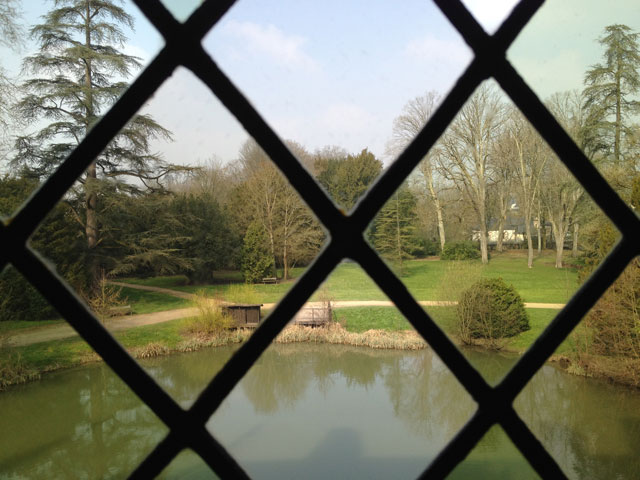You’d seriously think that something as simple as a window would have a direct correspondence in French, now wouldn’t you ? Well, it doesn’t . The English word “window” has a much wider connotation than the French fenêtre.

The comparison starts off simply enough. J’ai regardé par la fenêtre = I looked out the window. Mon appartement a cinq fenêtres = My apartment has five windows. Its when you start getting more specific that it gets more complicated.
The house has a big window overlooking the sea = la maison a une grande baie vitrée qui donne sur la mer. Baie actually means an opening in a wall, a door or a window, and vitré is the adjective from vitre = glass. Fenêtre in fact is generally used to mean the window frame even though the technical word chassis exists.
In English you would say, “I cleaned the windows” but in French you’d say j’ai nettoyé les vitres or even j’ai nettoyé les carreaux (since a lot of window panes are square) and not j’ai lavé les fenêtres. A window with a lot of little panes is a fenêtre à petits carreaux.
Whereas we would say “his ball broke the window”, in French you would say il a cassé la vitre avec sa balle. Verre can be used but it’s not the correct term.

A reader drew my attention to the use of vitré meaning a large number of windows in a TV programme about the Château de Champs sur Marne. La maison est très vitrée, même archi-vitrée. This is not the way the word is usually used and conveys the idea of a large amount of glass.
You would never use fenêtre to describe a large window that doesn’t open. It’s a baie vitrée as above. Note that our bay window is protruding where as baie vitrée is not. The French use the English term bay-window or fenêtre en saillie.

A really big glass window is called a verrière while a shop window is called a vitrine, with lèche-vitrine (lécher = lick) meaning window shopping! A ticket window in a train station, for example, is a guichet and the same word is used for ticket counter.
A stained glass or leadlight window is a vitrail in French (plural vitraux) with no distinction between the two in French. Leadlight could actually be used for both in English but stained glass is used traditionally for ornate windows and leadlight for windows of domestic and commercial architecture that are generally simpler.

One of the most surprising words connected with fenêtre that I know is défenestration. The first time I heard il s’est défenestré du sixième étage on the radio, I had no idea what it meant. I’ve heard it many times since. They never say “he jumped out the window” or “threw himself out the window” but always use the verb défenestrer.
Here are a few other windows to finish off :
fenêtre à guillotine = sash window (typically French, huh?)
fenêtre à battants/à meneau = casement/mullioned window
fenêtre à croisillons = lattice window
porte-fenêtre = French window
And in the world of computers :
fenêtre de dialogue = dialogue box
fenêtre d’aide = help window
fenêtre active = active window
I’m sure you know some more.




